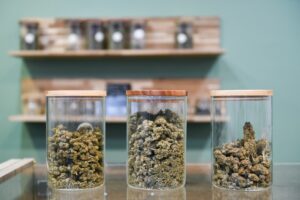"I have had sciatica for nine months. None of the products recommended – 1:1 spray, tincture, and salve – seem to have any effect on the pain. In fact, the salve seems to intensify it. I take the recommended dosages. I would like to know if any of the doctors have suggestions concerning efficacy, dosage, or perhaps a different product."
Sciatica may be caused from disc herniation, spinal bone spurs, or degenerative vertebral conditions. Usually, sciatica self-resolves in less than 4 weeks, although in some patients it may recur or last for much longer periods of time. There are a variety of behavioral, medical, and interventional therapies that have been used, because the condition is so common.
From a behavioral standpoint, I suggest maintaining a healthy weight, and undergoing a physical regimen that includes core strengthening, stretching, and cardiovascular exercise. Physical activity should be undergone as tolerated, and bedrest in excess of that needed for sleep should be avoided. There are a variety of structured programs available, such as back school, yoga, biofeedback, cognitive behavioral therapy, exercise therapy, functional restoration, interdisciplinary therapy, massage, mind-body interventions, acupuncture, and spinal manipulation. If you don’t have access to such programs, you might consider self-education literature for patients with low back pain and sciatica.
NSAIDS such as ibuprofen are the mainstay of medical therapy but should only be used short-term or for flare-ups. I typically discourage opiates, benzodiazepines, and systemic muscle relaxants unless you are suffering from an acute, severe and/or debilitating episode. Anti-epileptic medications, glucosamine, and anti-TNF-alpha therapies have not demonstrated efficacy. Several herbal drugs have been used which may or may not be helpful, including: cayenne, Devil’s claw, white willow bark, comfrey root extract, and lavender essential oil.
Cannabis has been found anecdotally to be helpful in alleviation of chronic low back pain and neuropathic pain, including sciatica. There is also a small body of medical (research) evidence that this is the case. Benefit may be obtained from vaporized, ingested, or topically applied cannabis.
Surgical intervention may be appropriate for certain patients, particularly those with spinal stenosis and/or progressively worsening symptoms. Most non-surgical interventions (interferential therapy, ultrasound, percutaneous electrical nerve stimulation, low-level laser therapy, transcutaneous electrical nerve stimulation, traction, shortwave diathermy) have not been found to have therapeutic efficacy.
dredmunds





